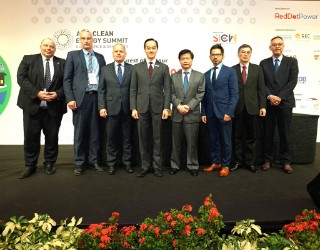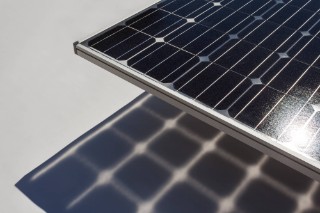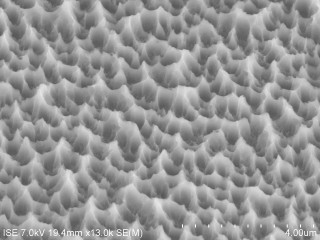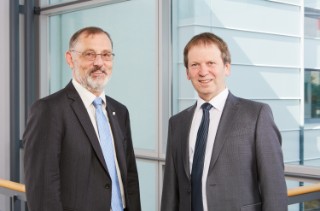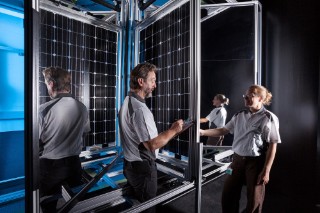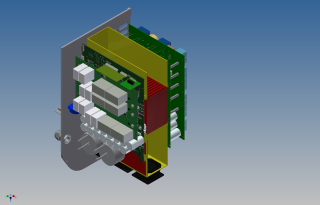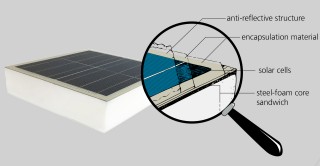Press Release #20 / 2017
Harvesting the Sun for Power and Produce – Agrophotovoltaics Increases the Land Use Efficiency by over 60 Percent
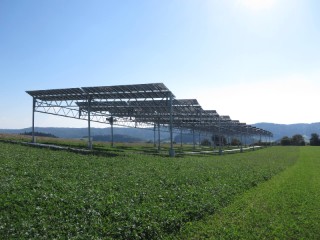
Until now, acreage was designated for either photovoltaics or photosynthesis, that is, to generate electricity or grow crops. An agrophotovoltaics (APV) pilot project near Lake Constance, however, has now demonstrated that both uses are compatible. Dual use of land is resource efficient, reduces competition for land and additionally opens up a new source of income for farmers. For one year, the largest APV system in Germany is being tested on the Demeter farm cooperative Heggelbach. In the demonstration project “Agrophotovoltaic – Resource Efficient Land Use” (APV-Resola)” led by the Fraunhofer Institute for Solar Energy Systems ISE, solar modules for electricity production are installed directly above crops covering an area of one third hectare. Now the first solar harvest of power and produce has been collected on both levels.
more info